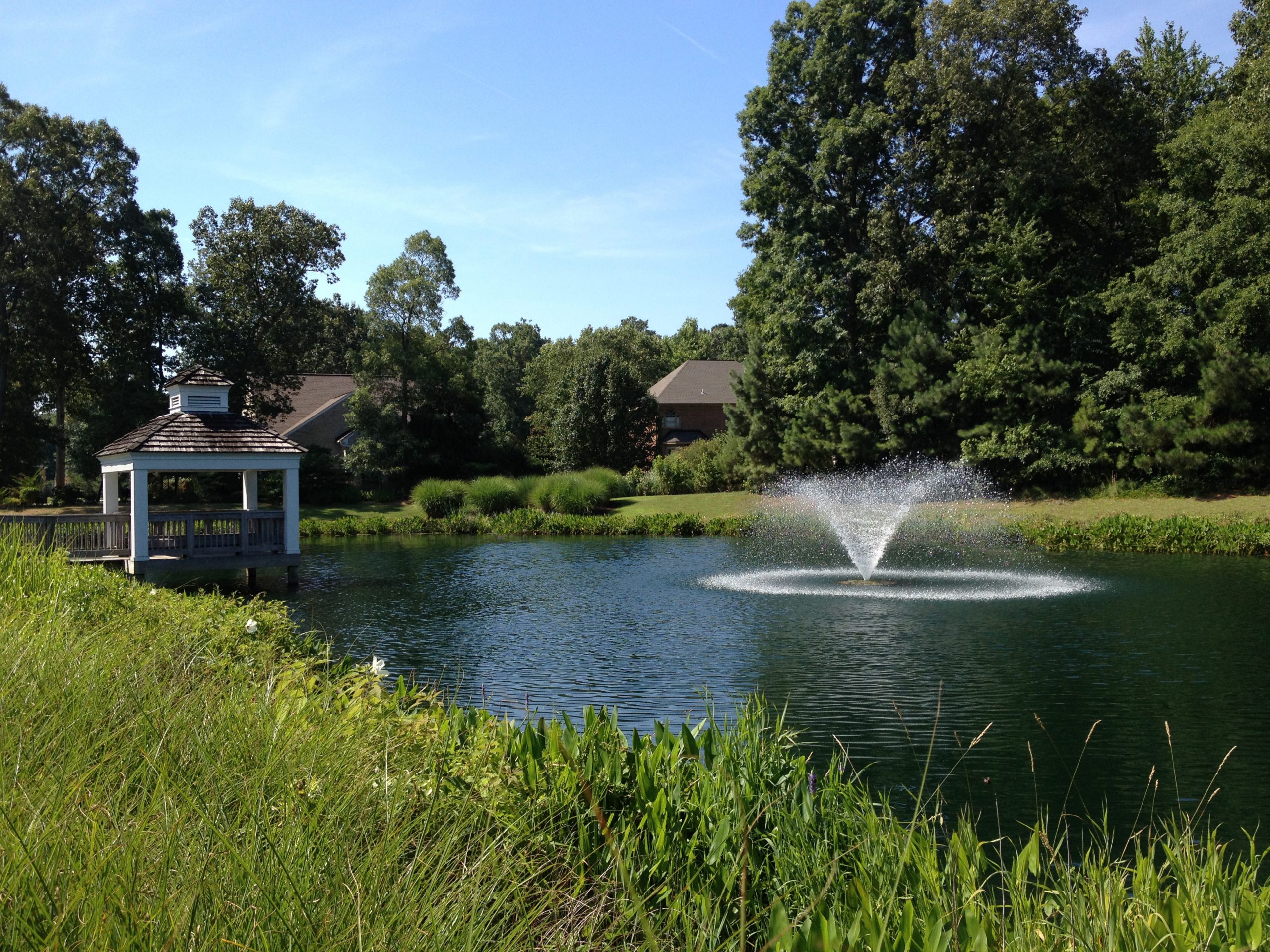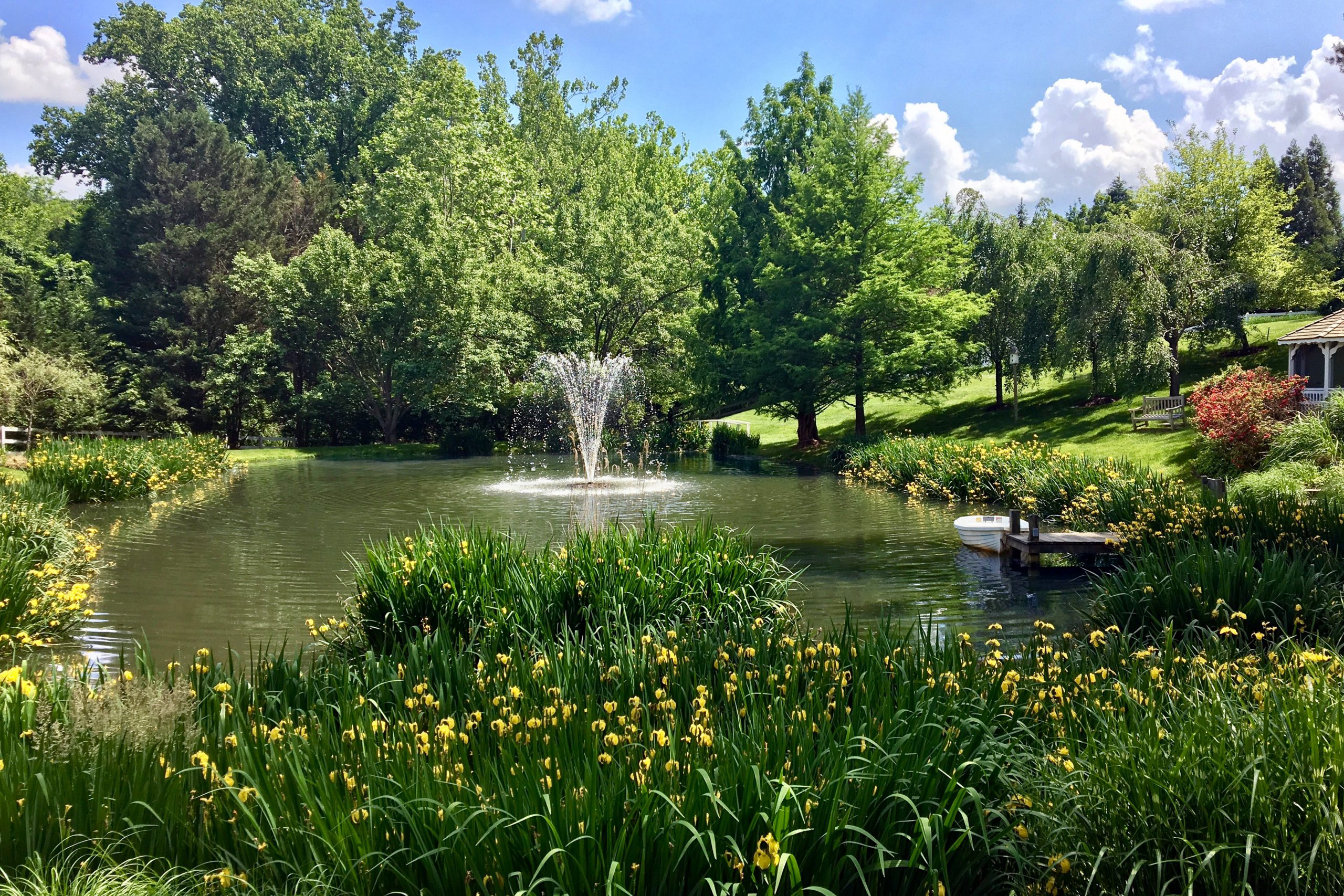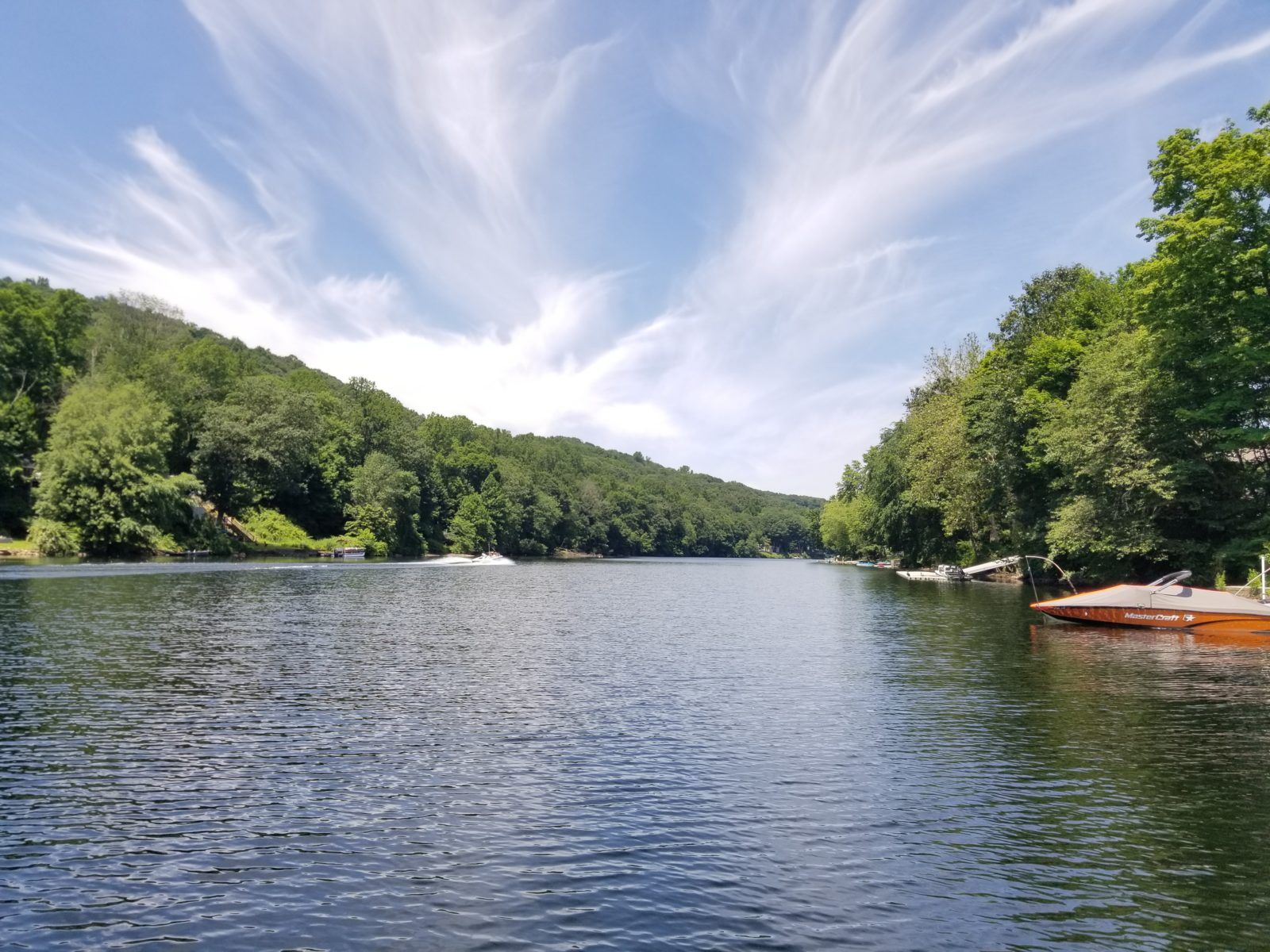Pond Buffer Zones: Creation and Benefits
July 9th, 2015
AS SEEN IN North Carolina Turfgrass Magazine, May/June 2015: Written by Industry Expert David Ellison, Aquatic Biologist with SOLitude Lake Management
 Establishing buffer vegetation has long been known to help stabilize the shorelines of lakes and ponds. While ponds and lakes are often vital sources for irrigation and a challenge to the golfers, the idea of providing aesthetics to these features is sometimes secondary for many golf courses. Increasingly, however, “natural” landscapes have become important features in golf courses and horticulture, as many people enjoy features without a “human influence.”
Establishing buffer vegetation has long been known to help stabilize the shorelines of lakes and ponds. While ponds and lakes are often vital sources for irrigation and a challenge to the golfers, the idea of providing aesthetics to these features is sometimes secondary for many golf courses. Increasingly, however, “natural” landscapes have become important features in golf courses and horticulture, as many people enjoy features without a “human influence.”
Benefits of buffers
In addition to increasing the aesthetic value of your course, establishing appropriate landscaping along lakes and ponds can provide long-term benefits. For instance, buffer zones along aquatic banks serve to reduce the transport of nutrients and sediment through the system and out to the watershed.When buffer plants are actively filtering nutrients and the plants are providing little nutrient input to the water, there will be indirect benefits to the health of your pond. Unwanted plant and algae growth in the water will be limited due to the filtration of nutrients from runoff, as well as direct filtration of the water from any plants that are “feet wet.”
Without a buffer between the turf area and the lake/pond, erosion along the shoreline can occur and create high sedimentation rates into the water body, poor water quality and loss of the original landscape. Having an appropriate buffer zone will stabilize the shoreline and significantly reduce the chances of erosion-related issues.
A well-established buffer can additionally function both as beneficial habitat for “good” wildlife and as barriers to nuisance wildlife. Buffers can provide safe habitat for many desirable species, including birds, frogs and rabbits, while allowing for an increase in the species diversity surrounding the lake. In contrast, nuisance wildlife is typically deterred from aquatic environments where there is a well-established buffer. When accessibility is limited for geese to walk in and out of the water, they will often choose alternative locations for nesting since they are unable to see potential predators. Without adequate nesting sites, geese will often choose other locations for feeding.
Human safety is also a secondary benefit, as the buffer prevents water access and potential injury. Trash can often be caught by buffer vegetation before entering the water as well, making maintenance tasks such as debris cleanup much easier.
Establishing buffers
While many plant species can be utilized for establishing a buffer, understanding the unique topography at each site is vital for plant survival. In addition, choosing the right plants is essential to plant survival and the efficacy of the buffer zone.
Plant selection and placement
The filtration of nutrients during rainfall events will be highly dependent upon the plants within the buffer area. Plants should be native species that are disease resistant, conducive to growth in that environment and resistant to drought. Also, plant location and spacing will often impact the success of nutrient removal.

The maximum benefits of a buffer area are achieved only when you have a good mix of aquatic and upland species covering both the shallow-water areas and dry areas along the shoreline. For an effective buffer zone, facultative wet plants that are effective in shoreline stabilization and nutrient uptake will provide the most benefit when established closest to the water, and plants less tolerant of aquatic habitats should be established upland.
Each species will have specific spacing requirements, and this is vital to success. Plant stabilization, growth and nutrient uptake is optimum when plants are properly spaced.
Grass buffers can be highly efficient at filtering phosphorous found in sediments. Healthy grass buffers can be established quickly, and the long stem density of the grasses and large surface area of a wide buffer zone allow for the effective deposition of phosphorous-laden sediment before it reaches the lake/pond. Tall fescue has been shown to be effective in nutrient uptake and in shoreline stabilization.
Most warm-season grasses are often very productive, have an extensive root system and are longer lived than cool-season grasses. Bluestem, gamma grass, switchgrass, lovegrass and wildflowers are other warm-season species that are often successful when used for creating a buffer area.
Cattails are often thought to be a beneficial shoreline and buffer species, but these plants typically do more harm than good. They will trap sediment, creating a shallower aquatic environment and altering the hydrology. Also, mosquitoes will often grow in the stagnant water around cattails.
Filtration and removal of sediment is often more effective when water flow from rainfall into the lake/pond is shallow and uniform (i.e., when the shoreline slope is minimal), whereas sheet flow and flooding create a poor environment for filtration. Areas where the slope is great will require grasses with a longer root structure. Research has shown that plants with longer root systems (such as switchgrass and cordgrass) will significantly stabilize buffer zones and lead to less erosion compared to a shoreline composed of Kentucky bluegrass or bermudagrass. These stabilizing shoreline plants are also usually more efficient at filtering nutrients, due to the longer root structure.
Trees within buffer zones are less effective than grasses in the filtration of water and absorption of nutrients. In addition, trees within a buffer can contribute to future erosion problems. Trees growing close to shorelines will often be limited in their direction of growth and create unstable root systems.
During heavy rain events, trees in buffers and on slopes will often fall and remove the root ball with them, causing significant erosion. Also, the tree canopy and root system often work to out-compete desirable species in the area, limiting the thickness of your vegetative buffer if they are not removed. Limiting tree growth in buffer zones also allows for maintaining good line of sight for golfers and reducing potential unknown hazards.

Often, the creation of a buffer zone can start with establishing a no-mow zone of specified width. Highly sloped areas will often benefit from wider no-mow zones to maximize filtration. Prioritization can be placed on common or high-use areas, and a narrower zone can be utilized.
The efficacy of that buffer zone can be dependent upon the width of the vegetative buffer and the buffer-zone plants. Maximum filtration of sediment and nutrients is often achieved when the buffer area is very wide, but nitrogen and phosphorous uptake can occur with even narrow vegetative buffers. Research has shown that buffer zones as little as three feet wide and knee-high can be highly effective in removing nutrients.
It is important to consider the maximum desired height of the buffer during plant selection. Having a dense buffer of moderate height provides benefits to the surrounding aquatic environment. Desired height is often between 18″ and 24″; this height allows for safe visibility to the water body, aids in goose control and is highly functional. Buffers too low will often allow easy access to the water for nuisance animals and poor nutrient filtration.
Buffer maintenance
Routine maintenance of a buffer zone is typically required to limit tree growth and maintain healthy buffer plants. In cooler months, it is typically recommended to cut the buffer area to no less than 18″ to limit the input of nutrients from clippings and dead plant matter. Some research suggests that occasionally cutting the tops of beneficial grasses will provide an increased uptake of phosphorous and nitrogen. Removal of clippings and other cut material is highly beneficial to limit nutrient loading in the watershed. Selective aquatic herbicide treatments can be utilized throughout the growing season to manage the buffer and prevent unwanted species from taking hold, while allowing the beneficial species to thrive.
Summary
Establishing natural buffers along the shorelines of your lakes and ponds can provide the aesthetic features that many people desire, while also creating benefits in terms of nutrient mitigation, erosion control and barriers to nuisance wildlife. Sedimentation rates and nutrient loading will be significantly decreased in lakes and ponds where buffers are created, allowing for water quality to be improved.
With these ecological benefits comes the added financial benefits associated with a decrease in the need for algaecides to treat nuisance algae blooms and the reduction of maintenance costs associated with not having to mow and trim these areas weekly. The bottom line is that creating and maintaining buffer zones in your landscapes will provide long-term financial, functional and environmental benefits.
Free Report: 8 Questions to Ask When Hiring a Lake Management Company
Contact the experts at 888-480-5253 for all of your lake, pond and fisheries management needs.
David Ellison is an experienced Aquatic Biologist with SOLitude Lake Management. Since 1998, SOLitude Lake Management has been committed to providing full service lake and pond management services that improve water quality, preserve natural resources, and reduce our environmental footprint. Lake, pond and fisheries management services and consulting, and aquatic products are available nationwide. Learn more about SOLitude Lake Management and purchase products at www.solitudelakemanagement.com.










